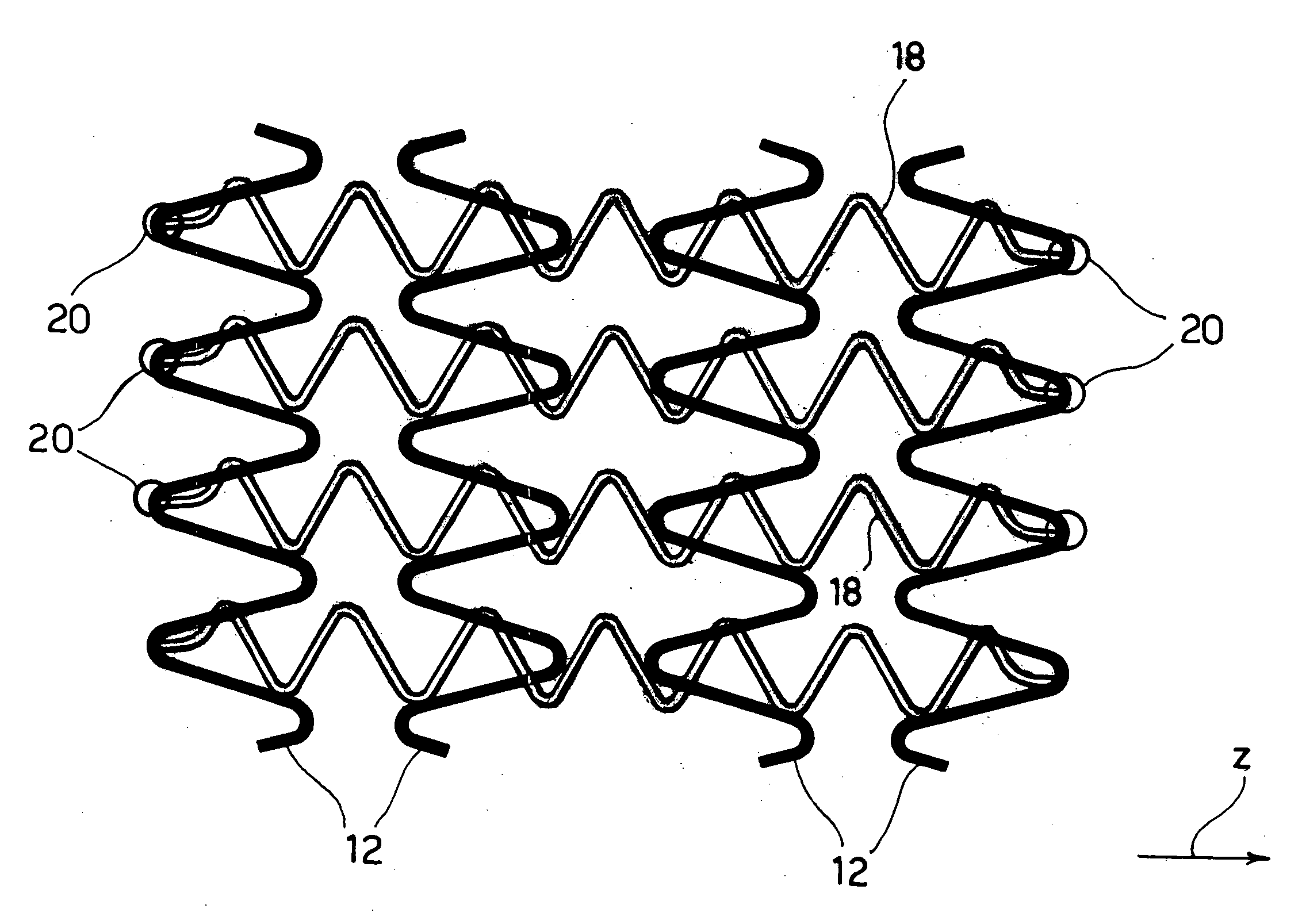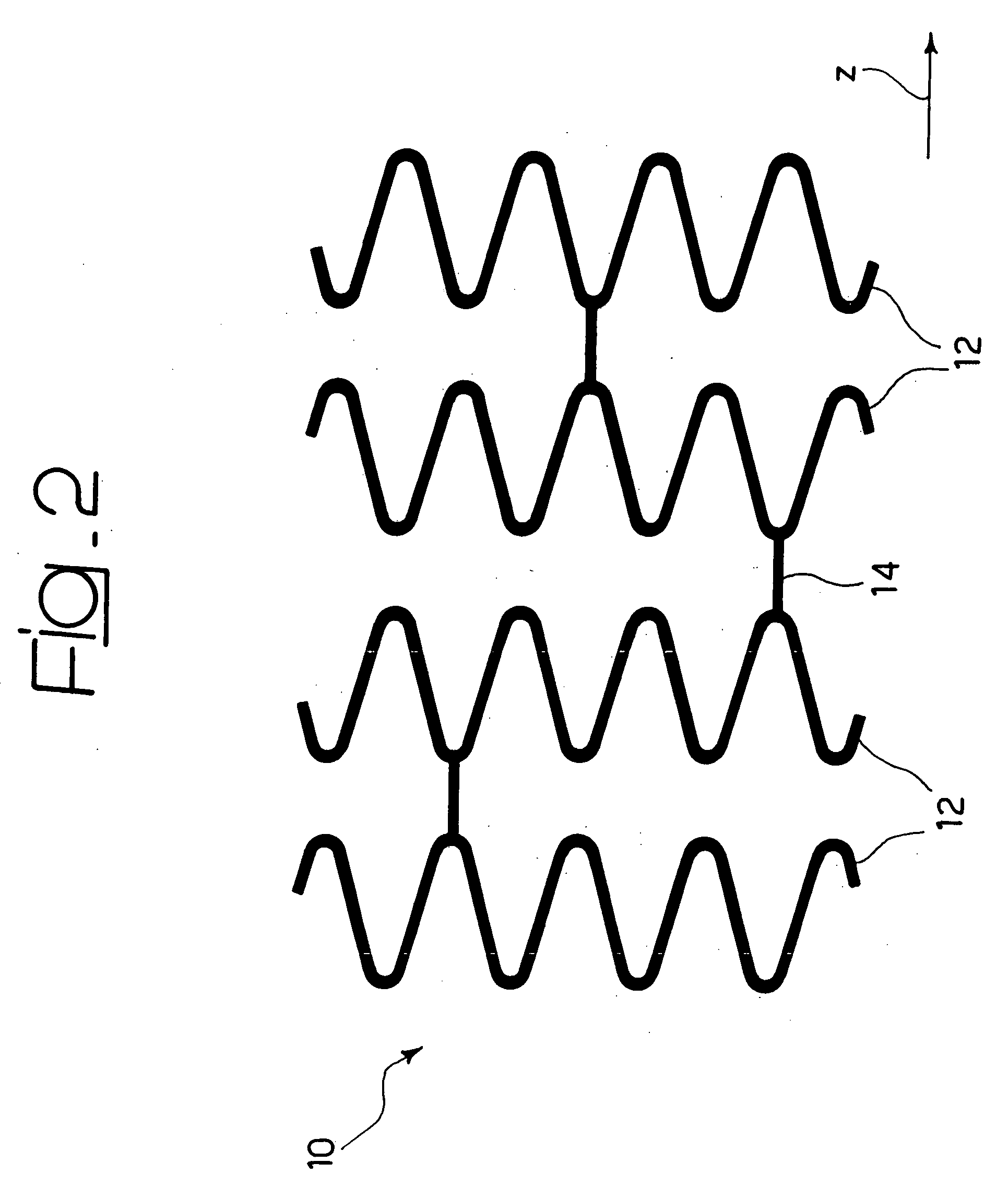Stents made of biodegradable and non-biodegradable materials
a biodegradable and non-biodegradable technology, applied in the field of stents, can solve the problems of stent disassembly, safety problems, known inflammatory conditions, etc., and achieve the effect of avoiding prolapse, simplifying the operation of loading drugs, and facilitating drug loading of selective types
- Summary
- Abstract
- Description
- Claims
- Application Information
AI Technical Summary
Benefits of technology
Problems solved by technology
Method used
Image
Examples
Embodiment Construction
[0033]In general, the solution according to the invention lends itself to being produced within the sphere of a stent structure of the type described, for example, in EP-A-0 875 215, comprising: (1) a plurality of annular elements the walls of which follow a looped path (typically sinusoidal or approximately sinusoidal) aligned along the axis of the stent (direction z in the figures) and selectively expandable between a radially-contracted position and a radially-expanded position to achieve the expansion movement of the stent, and (2) a network of longitudinal connecting elements (in general known as “links”) that extend like a bridge to connect the annular elements; said connecting elements are in general capable of extending and contracting in the longitudinal direction of the stent (for example by effect of a general λ or Ω conformation, see in this connection EP-A-0 875 215) in order to give the stent the properties of longitudinal flexibility required to guarantee that it disp...
PUM
 Login to View More
Login to View More Abstract
Description
Claims
Application Information
 Login to View More
Login to View More - R&D
- Intellectual Property
- Life Sciences
- Materials
- Tech Scout
- Unparalleled Data Quality
- Higher Quality Content
- 60% Fewer Hallucinations
Browse by: Latest US Patents, China's latest patents, Technical Efficacy Thesaurus, Application Domain, Technology Topic, Popular Technical Reports.
© 2025 PatSnap. All rights reserved.Legal|Privacy policy|Modern Slavery Act Transparency Statement|Sitemap|About US| Contact US: help@patsnap.com



